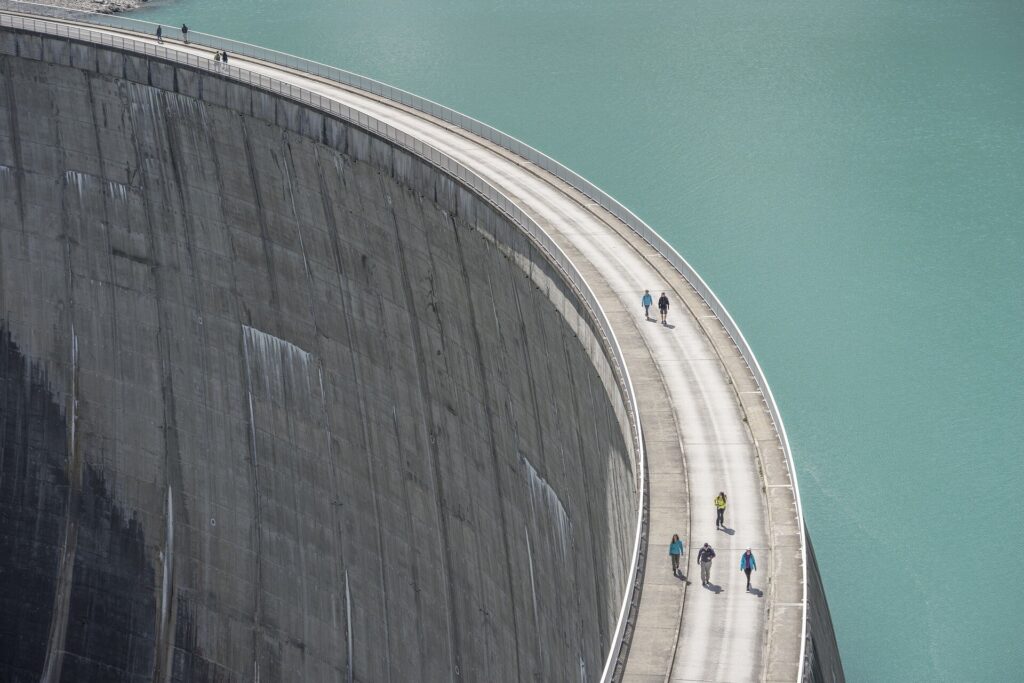Concrete is the most widely used human-made material on Earth and generally considered to be one of the most affordable, versatile and strongest construction materials, according to Aleksandra Radlinska, professor of civil and environmental engineering at Penn State.
Despite this, she acknowledges that concrete structures may be more susceptible to damage than initially thought, especially when exposed to particular minerals found across Pennsylvania, according to the United States Geological Survey.
Radlinska, alongside a team of researchers from Penn State and the University of Georgia, co-authored a study published in Cement and Concrete Research. Their work explored the impacts of two iron sulfide minerals that naturally occur in the environment, pyrrhotite and pyrite, on the structural integrity of concrete.
While extensive research has been conducted on the impacts of these minerals in acidic, or low pH balance environments, Radlinska said, less is understood about how these minerals interact with materials with a high pH balance like concrete. A better understanding of the impact that these minerals have on concrete could eventually help inform design and infrastructure renovations across the commonwealth, according to Radlinska.
Radlinska discusses why concrete is susceptible to these iron sulfide minerals and what engineers can do to design concrete materials against environmental factors.
What makes the integrity of concrete susceptible to iron sulfide minerals? Where are these minerals found in the environment?
Concrete is susceptible to iron sulfide minerals due to its chemical reactivity and ability to undergo oxidation and expansive reactions in the presence of water and oxygen. The formation of the rust-like products and secondary sulfate minerals induce internal stresses and expansion within concrete, resulting in cracking, chipping and eventually the crumbling of concrete structures.
This is especially the case for concrete foundations exposed to ground moisture, where the aggregate—the crushed rocks or sand mixed with cement to create concrete—was contaminated with pyrrhotite, a very common iron sulfide mineral. The economic and safety implications of such degradation include increased maintenance and remediation costs, as well as compromised structural integrity.
Pyrrhotite is typically associated with base metal sulfide deposits and can be found in igneous, sedimentary and metamorphic rocks—different types of rocks found across Pennsylvania. Pyrrhotite is related to the more common and well-known mineral pyrite, also known as fool’s gold, but differs from pyrite because it has less sulfur and is far more reactive to water.
Aside from these iron sulfide minerals, what other minerals or environmental factors impact the structural integrity of concrete over time?
Concrete, while a durable construction material and frequent choice of construction companies around the world, is a chemically reactive material. Its structural integrity can be compromised by both internal components, like deleterious minerals, which can be dangerous to people or make structures prone to wear, and external environmental factors like weather or erosion.
Among the frequently observed deleterious reactions are alkali-silica reactions, researched extensively at Penn State, alkali-carbonate reactions due to carbonate minerals like dolomite, chloride attack—where chloride corrodes the reinforcement structures within concrete, damage due to repeated freezing and thawing, and carbonation, to name a few.
Despite its susceptibility to these reactions, concrete proves to be one of the most resilient and versatile construction materials, and as such, is chosen and designed for a variety of climatic and environmental conditions.
What types of buildings and infrastructure are most impacted by these findings? How does this affect the average Pennsylvanian?
Pyrrhotite damage in the U.S. most severely impacts residential buildings and low- to mid-rise structures that use concrete made with locally sourced aggregate contaminated by iron sulfide minerals, particularly in the foundations of the structures.
While pyrrhotite-related concrete failures are most common in Connecticut and Massachusetts, parts of Pennsylvania are geologically susceptible due to sedimentary rock formations containing iron sulfides.
How did you test the impacts of these minerals on concrete?
Detecting pyrrhotite in aggregate is possible, but estimating its impact and potential for damage to concrete is a work in progress.
In our recent work, we investigated the kinetics and mechanisms of iron sulfide dissolution at high pH levels by designing a series of batch reactor experiments, which allow us to test and monitor reactions in an ideal environment. The kinetics of iron sulfide dissolution were assessed by determining the rate of sulfur release in the solutions.
These tests tend to require controlled laboratory conditions and can be time-consuming. However, they are necessary steps to establish a reference point and develop faster testing protocols that can be more easily implemented in the field.
What are the best ways to protect concrete from dissolving over time?
Concrete, when designed properly, can last millennia. The materials science of concrete has dramatically advanced our understanding of the material and informed materials testing strategies, as well as chemical and mineral admixtures, that tailor each concrete mixture to specific local requirements.
However, this is an active and evolving research field, where new materials and requirements necessitate innovative and adaptive solutions. Specifically, this involves selecting a low-permeability concrete mixture design to minimize water and chloride ingress, testing aggregates to be used in concrete and implementing regular maintenance and inspection.
With that, we can expect concrete infrastructure to not only last longer but also be more resilient, ensuring it remains the solid choice for generations to come.
More information:
Zhanzhao Li et al, Dissolution kinetics of iron sulfide minerals in alkaline solutions, Cement and Concrete Research (2025). DOI: 10.1016/j.cemconres.2025.107850
Citation:
Q&A: Can minerals compromise concrete structures? (2025, August 7)
retrieved 8 August 2025
from https://techxplore.com/news/2025-08-qa-minerals-compromise-concrete.html
This document is subject to copyright. Apart from any fair dealing for the purpose of private study or research, no
part may be reproduced without the written permission. The content is provided for information purposes only.

